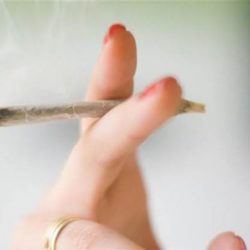How do I get more latex in my rubber tree?
In the extensively studied plant hormones only ethylene was identified to stimulate the latex production, which is applied as ethephon (an ethylene releaser). Bark treatment with ethephon is known to increase the latex yield by 1.5–2 fold in rubber tree.
Do Rubber trees produce latex?
When the bark of the Hevea tree is partially cut through (tapped), a milky liquid exudes from the wound and dries to yield a rubbery film. Rubber trees are tapped about once every two days, yielding a cupful of latex, containing approximately 50 grams (1.7 ounces) of solid rubber, each time.
How much latex does a rubber tree produce?
After tapping, the cut dries, and latex stops flowing in an hour or two. An average rubber tree yields 19 pounds of rubber latex annually, and it requires 700,000 rubber trees to supply Alliance each year with natural rubber.
What part of the rubber tree has latex?
The milky liquid (latex) that oozes from any wound to the tree bark contains about 30 percent rubber, which can be coagulated and processed into solid products, such as tires. Latex can also be concentrated for producing dipped goods, such as surgical gloves.
Is rubber the same as latex?
The term ‘rubber’ refers to durable, waterproof and elastic material made from natural or synthetic latex. Where rubber is usually the finished product, latex refers to the liquid form; a stable emulsion of polymer microparticles in an aqueous solution.
Which rubber has the properties of natural rubber?
The major commercial source of natural rubber latex is the Amazonian rubber tree (Hevea brasiliensis), a member of the spurge family, Euphorbiaceae. This species is preferred because it grows well under cultivation. A properly managed tree responds to wounding by producing more latex for several years.
What are the disadvantages of natural rubber?
DISADVANTAGES: NATURAL RUBBER does not perform well when exposed to chemicals and petroleum derivatives, including petrochemicals. It is not recommended for outdoor applications where maximum resistance to sunlight, ozone, oxygen or heat aging is major factors.
How profitable is rubber plantation?
The average yield from rubber plantation is expected to be 375 kg per hectare annually if the trees are grown from seedlings and if they are grown from budded plantlets then the average yield is higher and is estimated to be around 900 to 1000 kg per hectare.
How much money do rubber tappers make?
Improved transport spurs greater investments by local industry, which benefits rubber tappers such as Barros. “Today a producer earns as much as $35 a day. Up until the 1990s, people were earning only $38 a month.”
What is latex free rubber?
The terms “latex free” and “does not contain natural rubber latex” suggest that the medical product is completely without NRL. Synthetic latex, such as nitrile and polyvinyl chloride, does not contain the proteins responsible for NRL allergy. Not all reactions to wearing gloves are from latex.
Is latex considered natural rubber?
Natural rubber latex is made from plant sources such as the sap of the Brazilian rubber tree. It is used in numerous medical products, including adhesive bandages, condoms, medical gloves, catheters, sanitary napkins, crutches and blood-pressure monitoring cuffs.
What are properties of natural rubber?
Natural rubber has flexibility and strength, as well as impurities and vulnerability to environmental conditions and hydrocarbons. Compared to other rubbers, natural rubber is one of the most flexible types, and it’s resistant to water and certain chemicals.
Where is natural rubber used?
Natural rubber is an essential raw material used in the creation of more than 40,000 products. It is used in medical devices, surgical gloves, aircraft and car tires, pacifiers, clothes, toys, etc.
What are the disadvantages of natural and synthetic rubber?
Though synthetic rubber has innumerable advantages but it’s disadvantages are no less. ◼It has poor mechanical properties . ◼Its tensile strength is quite weak. ◼Tear strength is also very poor.
What is the difference between natural rubber and synthetic?
The key difference between natural rubber and synthetic rubber is their origin. Both are polymers, but natural rubber is produced from the latex obtained from a tree, whereas synthetic rubber is an artificial polymer produced by using petroleum byproducts.
What type of tree produces latex?
Amazonian rubber tree
The major commercial source of natural rubber latex is the Amazonian rubber tree (Hevea brasiliensis), a member of the spurge family, Euphorbiaceae.
An average rubber tree yields 19 pounds of rubber latex annually, and it requires 700,000 rubber trees to supply Alliance each year with natural rubber. Trees are six years old before tapping for rubber begins and they may be tapped for up to 28 years.
What are the properties of natural rubber?
Natural Rubber Properties
- Abrasion Resistance: Excellent.
- Tear Resistance: Excellent.
- Solvent Resistance: Poor.
- Oil Resistance: Poor.
- Aging Weather/Sunlight: Poor.
What is the most common type of latex allergy?
Direct contact. The most common cause of latex allergy involves touching latex-containing products, including latex gloves, condoms and balloons. Inhalation. Latex products, especially gloves, release latex particles, which you can breathe in when they become airborne.
What’s the difference between natural latex and rubber?
Natural latex is a white sap that comes from hevea brasiliensis trees, which are more commonly called rubber trees. This sap can be refined and compounded, and this makes it readily processed and optimizes its physical properties. An example of a product that is made from natural rubber are white gloves that are used by medical professionals.
Where does the latex from a rubber tree come from?
Latex from the rubber tree, Hevea brasiliensis, is produced in specialized cells, laticifers, located within the bark of the tree. On incising the tree’s bark, in a process called “tapping,” the latex oozes out and is collected.
What kind of tree does rubberwood come from?
Unsourced material may be challenged and removed. Rubberwood is a light-colored medium-density tropical hardwood obtained from the Pará rubber tree ( Hevea brasiliensis ), usually from trees grown in rubber plantations.
What kind of plant can replace a rubber tree?
There, researchers are exploring plants which might step in to replace the rubber tree. One of the plants under investigation is Taraxacum kok-saghyz, a small weedy plant cultivated by the Russians when the supply of Asian rubber was threatened during World War Two (the USA also experimented with it as an emergency rubber crop ).
What kind of trees are used to make latex?
Hevea brasiliensis This plant species is most commonly known as the rubber tree or rubber plant because it has been the major source of latex for making natural rubber. It is native to rainforests in the Amazon region which includes the countries of Brazil, Venezuela, Ecuador, Colombia, Peru, and Bolivia.
Which is the best type of rubber tree?
Here are the most popular types of rubber tree plants to grow at home and the characteristics that set them apart. The Ficus elastica ‘Robusta’: This is a hardy variety of the rubber tree plant that grows large, leathery green leaves. Ficus elastica ‘Decora’: This variety grows dark green leaves that are thick and glossy.
What’s the difference between natural rubber and synthetic latex?
Natural rubber latex is a precise term for the white, viscous, “milky” sap found in the hevea brasiliensis variety of rubber tree.
What kind of rubber plant has red leaves?
Ficus elastica ‘Burgundy’: This rubber plant variety grows deep burgundy-toned leaves with bright red stems. The Ficus elastica ‘Tricolor’: This variety has colorful green leaves with splashes of pink and cream coloring.






